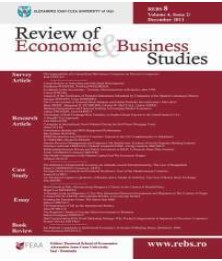PURCHASING POWER PARITY AND PRODUCTIVITY-BIAS HYPOTHESIS
PURCHASING POWER PARITY AND PRODUCTIVITY-BIAS HYPOTHESIS
Author(s): Tri WidodoSubject(s): National Economy, Methodology and research technology, Socio-Economic Research
Published by: Editura Universităţii »Alexandru Ioan Cuza« din Iaşi
Keywords: Purchasing Power Parity (PPP); Balassa-Samuelson Effect; Cointegration;
Summary/Abstract: This paper examines the purchasing power parity (PPP) theorem adjusted the “productivity-bias hypothesis” or the Balassa-Samuelson effect (Balassa, 1964; Samuelson, 1964) for eight East Asian countries including Japan, New Industrializing Economies (NIE-3: Singapore; Hong Kong, China; and Korea), the ASEAN-3 (Malaysia, Indonesia and the Philippines) and the People’s Republic of China (PRC). This paper applies three methods of analysis i.e. univariate time series, multivariate regression and Johansen multivariate cointegration. The three methods give the same conclusions. First, the PPP hypothesis does not hold in the case of the eight East Asian countries. Second, non-traded goods give significant contribution on the PPP deviation. It is confirmed by the existence of Balassa-Samuelson effect.
Journal: Review of Economic and Business Studies (REBS)
- Issue Year: 2015
- Issue No: 16
- Page Range: 9-38
- Page Count: 30
- Language: English

